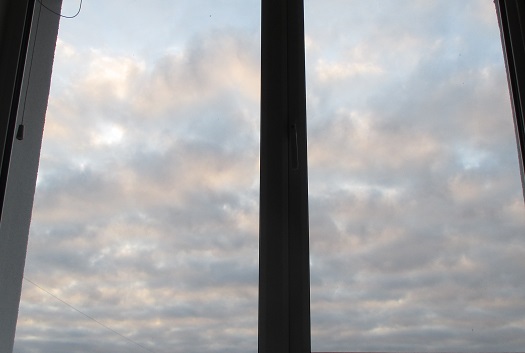My current moisturiser, made by my sister
A present for a friend
Milk and mask
December can be stressful at the best of times, but we have a choice in how we deal with it, and while I never really got that worked up about the season and am striving to eliminate the word 'stress' from my vocabulary (I am a big believer in the power of words and Marisa Peer's approach), this year we simplified it even more by agreeing to no longer give presents to every family member and generally opting for low-key in all areas. I kept up the tradition of baking different varieties of German Christmas biscuits, with my nephews helping me. The highlight of the pre-Christmas period was hearing John sing with the ConTempo Quartet again, in three different venues. The last gig had me in tears throughout.
It is an emotional time of the year for me. Christmas heightens the absence of those we have lost - the other day it struck me that I am the age (36) that marks the point where I have had half my life with my dad and half of it without him. Two years ago I miscarried a week before Christmas on the day of our 12-week scan and then was diagnosed with stage III lung cancer out of the blue a few months later. Both last year and this year I had CT scans of the brain, thorax and pelvis in mid-December with all the scanxiety surrounding them, and last year around this time my mum had tests that would lead to her being diagnosed with breast cancer. My feelings are swinging wildly on the pendulum between exhaustion and fear on one end and immense gratitude (my new mantra, given to me by my amazing hypnotherapist, is "Thank you Life") and joy on the other: right now, my mum and I are doing well; we have food and shelter and peace in our countries and loving humans and animals around us. I spend my days with fulfilling and rewarding pursuits, and in a lot of ways life is good.
Self-care is high up on the list of priorities this month and always. Two calming and grounding elements I find easy to incorporate into every day are aromatherapy and nature. I painted the forest scene above as a present for a friend, and it was quite meditative and therapeutic. Forest bathing has become a vital part of my healing, and in a way it has returned me to my roots (excuse the pun): we grew up in a village close to a forest, and my friend still lives there (as do my mum and younger sister). It brought back memories of foraging for wild mushrooms and hiking with my dad and all the exploring and playing we did in and around the forests of our childhood. I loved using so many different greens in this painting. Patients looking out at green from their sickbeds tend to recover faster, and luckily the views from our house offer an abundance of green.
My sister made me a lotion containing frankincense essential oil - I have been using this oil in various ways since I found out about its anticancer properties (I put it in a diffuser during my daily yoga practice, for example) - and geranium oil, one of my all-time favourites. I haven't asked her for the recipe yet, but a quick Ecosia search (I still use 'google' as a verb, even though I switched to Ecosia) yields a lot of great homemade beauty products including frankincense oil. It works well for all skin types, and the scent is heady and musky.
My friend Vu gave me the Weleda lavender bath milk when I was going through treatment. The combination of lavender and a milky consistency makes for one of the most soothing baths. It comes in glass, as does the seaweed face mask from a local company worth supporting, White Witch - their products are organic, vegan and ethical. John bought the mask for me, and I first used it after the worst of the chemoradiation, on the morning I finally felt stronger again, as in strong enough to apply and take off a mask (the things we take for granted when we are well!). I visualised myself emerging renewed and clear of all toxins and illness after rinsing off the mask. It smells energising, as it also contains mint, which together with the seaweed and the green tea forms a perfect trinity of green.





























